The customer’s journey can be complex: first, they click on your ad, then search on Google, fill out a form, and finally, they are retargeted with a Facebook ad and buy from you.
As a marketing manager, these complicated journeys make your job more difficult, and you need a more sophisticated way to measure what channels are driving your leads and sales.
Marketers rely on marketing attribution tools to prove to their CEO the dollar value they bring to the business and advance their career as a result.
What is marketing attribution?
Marketing attribution is the process of determining which marketing channel(s) contribute to the leads and sales, enabling marketing managers to optimize their marketing strategy and increase their ROAS (Return On Ad Spend) as a result.
It helps marketers map out the customer journeys, and understand which touchpoint really contributes to the lead or sale.
Marketing attribution platforms track the customer interaction with the different touchpoints (E.G. Google Ads click –> Google search –> email click). It then attributes a percentage value to each touchpoint as a way to quantify the respective impact of each channel in the sale.
Example:
- Google Ads: 5%
- Google Search: 20%
- Facebook ad: 25%
- Email: 50%
If the sale that resulted from this customer journey is 1,000$, then each channel contributed to the respective sale amount:
- Google Ads: 50$
- Google Search: 200$
- Facebook ad: 250$
- Email: 500$
By aggregating the sale amount to each channel for all your sales, you see how much contribution each channel brings to your sales. For example:
- Email: 15,200$
- Google Search: 10,500$
- Facebook ad: 2,550$
- Google Ads: 1,750$
You can then adapt your marketing strategy by promoting the channels that contribute the most to the sale.
Why is marketing attribution important?
Marketers often struggle to demonstrate their value to the CEO. When I was head of online marketing at Frederique Constant, I would show my results in terms of number of followers gained, traffic, and leads. All these vanity metrics were not enough to show my impact on the business.
After I started using advanced marketing attribution tools, I demonstrated the impact of my work on the revenue by accurately calculating the ROI and ROAS. This allowed me to get higher marketing budgets during the annual marketing strategy meeting, and to negotiate a higher salary by proving to the CEO my dollar impact on the business.
What are the different types of marketing attribution tools?
Marketing attribution tools use different attribution models to credit the sale back to a single channel (single-touch) or multiple channels (multi-touch). Let’s review the different attribution models used.
1. Last-click marketing attribution tools
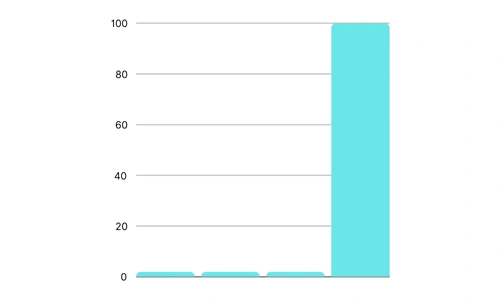
Last-click attribution model assigns 100% of the credit for a sale to the last touchpoint in the customer’s journey toward making a conversion (lead or sale), while all the channels the customer interacted with before that last interaction are assigned a 0% credit. That’s the most popular attribution model, at leadsources.io we use it to attribute the source of your leads to the last channel your leads interacted with.
Best suited for:
- Companies focusing on immediate results and requiring simple yet actionable analytics.
- Campaigns with short sales cycles: Helps identify which touchpoints are most effective at driving immediate leads or sales
Pros:
- Widely used in many analytics platforms (e.g., Google Analytics) as the default attribution model, making it familiar to most marketers.
- Easy to implement and understand, as it attributes credit to just one touchpoint.
Cons:
- Does not account for the complexity of a customer’s decision-making process if your marketing strategy involves multiple touchpoints.
Website: leadsources.io
2. First-click marketing attribution tools
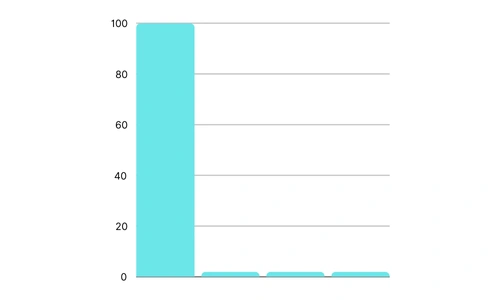
The First-click attribution model assigns 100% of the credit for a sale to the initial touchpoint in the customer’s journey toward making a purchase, while all the channels the customer interacted with after that first interaction are assigned a 0% credit.
Best suited for:
- Short customer journeys
- Businesses focused on identifying and optimizing top-of-funnel activities.
Pros:
- Simplicity: It is straightforward to implement and understand since it assigns all credit to the first touchpoint, avoiding complex calculations
- Useful for brands prioritizing top-of-funnel activities, such as ads, content, or campaigns designed to capture attention.
Cons:
- This may lead to over-investment in channels that introduce the customer without fully understanding the role of nurturing efforts.
- Does not account for the complexity of a customer’s decision-making process, where multiple touchpoints often work together.
3. Multi-touch marketing attribution tools
Linear marketing attribution tools
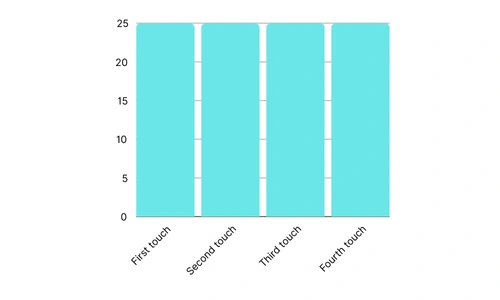
In the linear attribution model, the credits are allocated evenly across all the touchpoints that a customer went through, from the discovery to the conversion.
Best suited for:
- Businesses and campaigns that prioritize understanding the overall customer journey and value consistent engagement across multiple touchpoints.
- Businesses with long sales cycles.
Pros:
- Easier to set up and interpret compared to algorithmic models, while still providing a more balanced approach than single-touch models.
- Highlights the role of every channel, which helps teams understand how multiple touchpoints work together to drive conversions.
Cons:
- In campaigns where certain touchpoints play a larger role (e.g., discovery or closing), the model can misrepresent the importance of those interactions.
Time-decay marketing attribution tools
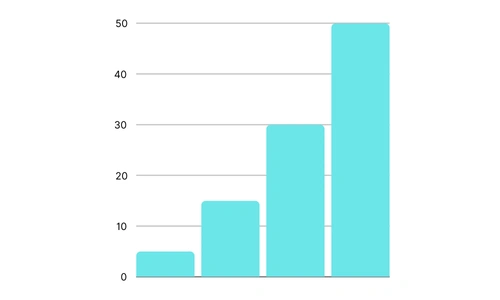
Time-decay attribution model assigns more credit to touchpoints that occur closer in time to the final conversion.
Best suited for: Sales funnels with long durations, where customer journeys extend over weeks or months, such as real estate, SaaS, or enterprise solutions.
Pros:
- Matches customer behavior where recent interactions are often more influential in driving purchases.
- Accounts for multiple touchpoints over an extended period, making it suitable for complex customer journeys.
Cons:
- Early-stage activities like awareness campaigns may appear less impactful, despite their role in initiating the customer journey.
- In quick conversion paths, the distinction between touchpoints may not be significant, reducing the model’s utility.
U-shaped marketing attribution tools
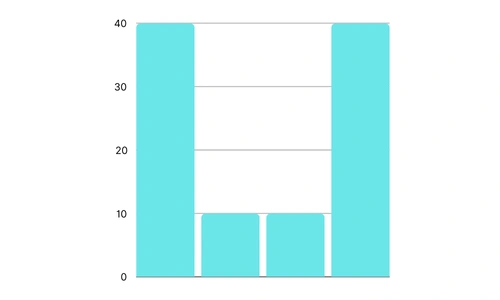
The U-shaped attribution model assigns most of the credit to the first and last touchpoints in a customer’s journey. Typically, 40% of the credit is given to the first interaction (awareness), 40% to the last interaction (conversion), and the remaining 20% is distributed across the middle touchpoints.
Best suited for: Companies with a clear emphasis on brand awareness campaigns (e.g., ads, social media) and conversion efforts (e.g., direct sales, closing campaigns).
Pros:
- Highlights the importance of both initial lead generation and final conversion efforts, making it ideal for understanding top and bottom-funnel activities.
Cons:
- More difficult to implement than single-touch models like first-click or last-click due to the need for data tracking and tool integration.
W-shaped marketing attribution tools

The W-shaped attribution model assigns the majority of credit (usually 90%) to three key touchpoints in the customer journey: the first interaction, the lead creation, and the final conversion. The remaining 10% is distributed across any additional touchpoints that occur between these three milestones.
Best suited for:
- B2B businesses with longer, more complex sales cycles where lead nurturing and multiple interactions are essential to close a sale.
Pros:
- Highlights the importance of discovery, nurturing, and closing touchpoints, providing a comprehensive view of critical interactions.
Cons:
- More challenging to set up compared to simpler models like first- or last-click attribution, as it involves multiple touchpoints and weighted credit allocation.
Full-path marketing attribution tools
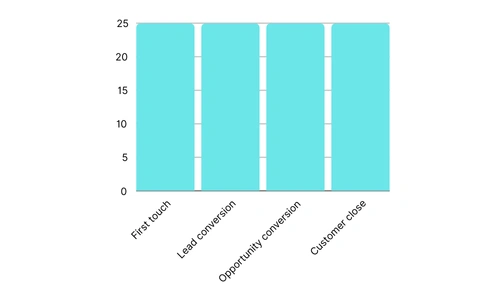
The full-path attribution model assigns credit to every touchpoint in the customer journey, from the first interaction to conversion and beyond. It distributes credit across touchpoints, often giving higher weight to significant interactions like first touch, lead creation, opportunity creation, and final conversion.
Best suited for:
Pros:
- Tracks and evaluates the performance of every stage in the customer journey, providing a holistic view of marketing efforts.
Cons:
- Requires advanced tracking systems and data analytics tools to capture and analyze all interactions.
Best marketing attribution tools
Now that we have a strong understanding of the different attribution models, let’s go through the best marketing attribution tools.
1. LeadSources
LeadSources is a multi-touch marketing attribution tool that tracks the source of your leads throughout the whole customer journey.
It is probably the most powerful attribution marketing tool when it comes to lead source data, as each lead comes with a comprehensive dataset of lead source data: channel, source, UTM parameters (campaign, term, content), device, OS, and browser. LeadSources also records all the pages visited during each session.

Best for:
- Lead‑generation workflows where linking each lead back to its source is critical (e.g., agencies, small‑to‑mid B2B).
- Businesses activating several lead generation channels, and that want to understand which channels contributed to the generation of their leads
- Businesses with long sales cycles, and that want to identify their customer journey throughout each step of the lead generation (from first click to form submission)
Features:
- Multi‑touch lead attribution
- Detailed lead data: channel, source, campaign, term, content, page‑path, device, OS, browser
- Automatically normalises channel naming and UTM/referrer data to unify attribution reporting
- Form builder integrations
- Lead source tracking dashbaord
Pricing: Starting at $48/month
2. Ruler Analytics
Ruler Analytics is a closed-loop marketing attribution tool designed to tie together online channels, leads and revenue. It captures each interaction—including clicks, form-submissions, live-chat conversations and phone calls—and then links those touch-points back to closed opportunities and sales.
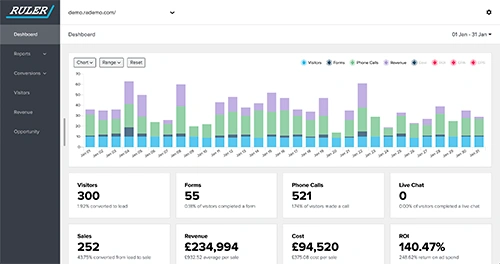
Features:
- Attribution modelling
- Revenue attribution
- Opportunity attribution
- Web form attribution
- Call attribution
- Live chat attribution
- eCommerce attribution
- Offline conversion tracking
Best for: Businesses that generate leads via forms, live chat, or phone calls and need to map those back to marketing sources and ultimately to revenue.
Pricing:
| Plan | Pricing *Ruler Analytics offers a 12-month agreements as standard. | Website visits included |
| Small business | from £199 (pay monthly)* from £179 (pay annually)* | 5,000 monthly visits |
| Medium business | from £649 (pay monthly)* from £584 (pay annually)* | 50,000 monthly visits |
| Large business | from £1149 (pay monthly)* from £999 (pay annually)* | 100,000 monthly visits |
| Advanced | Contact sales | 200,000+ monthly visits |
3. Usermaven
Usermaven is a modern marketing and product analytics tool that includes a strong attribution component. It tracks full customer journeys by capturing touchpoints (ads, emails, social posts, product interactions), and offers built-in multi-touch attribution models (e.g., first-touch, last-touch, linear, time-decay, U-shaped) with AI‐driven insights.
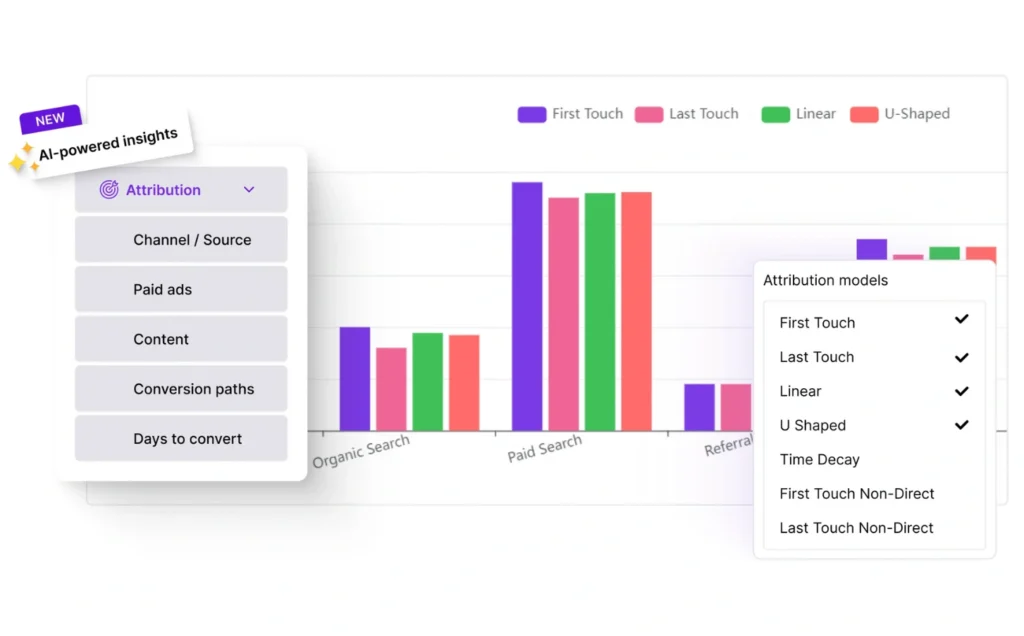
Features:
- Full customer‑journey analytics
- Multi‑touch attribution across channels
- Automatically tracks clicks, page views, form submissions, custom events
- Funnels, user journeys & cohort/segmentation
- AI‑powered insights & analytics assistant
- Privacy‑first, cookie-less tracking & ad‑blocker resistance
- CRM integrations & revenue attribution
Best for: Mid-sized businesses or agencies that want an intuitive, privacy-focused analytics + attribution tool
Pricing:
| Plan | Growth | Scale | Enterprise |
| Price | $84/month (monthly payment) $71/month (annual payment) | $199/month (monthly payment) $169/month (annual payment) | Contact sales |
| Usage | 3 users 3 workspaces 5 years of data history | Unlimited users 5 workspaces 7 years of data history | Unlimited users Custom workspaces Unlimited data history |
4. LeadRx
LeadsRx is a multi-touch, cross‐channel marketing attribution platform designed to give marketers a full view of how all touchpoints contribute to conversions and revenue. It supports digital channels (search, social, display), traditional media (TV, radio, podcasts, OTT) and integrates inbound phone calls and offline events.
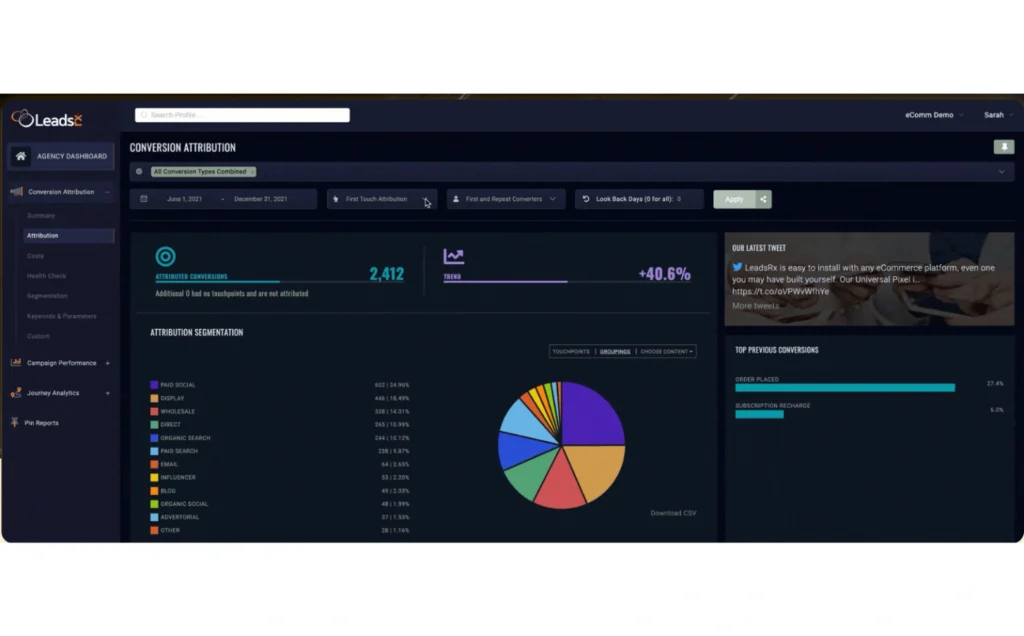
Features:
- Multi-touch marketing attribution
- Web, radio and TV attribution
Best for: Enterprise marketers and agencies
Pricing: contact sales
5. Dreamdata
Dreamdata connects ad campaigns data, customer journey and revenue together to provide a full activation and attribution picture.
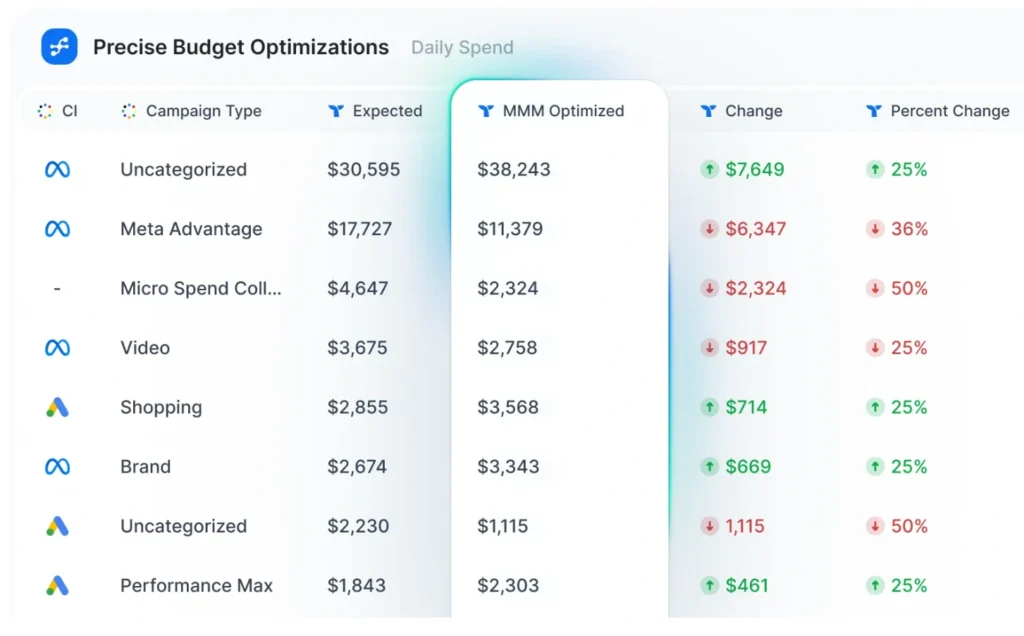
Features:
- Customer journey
- Performance attribution
- Build audience
- AI signals
- Revenue analytics
Best for: B2B businesses wanting precise analytics to tie marketing activities to actual revenue.
Pricing: Free tier available, paid tier starts at $750/month.
6. Triple Whale
Triple Whale is an e‑commerce‑oriented analytics & attribution tool with strong behavioural analytics and ecommerce attribution capabilities.
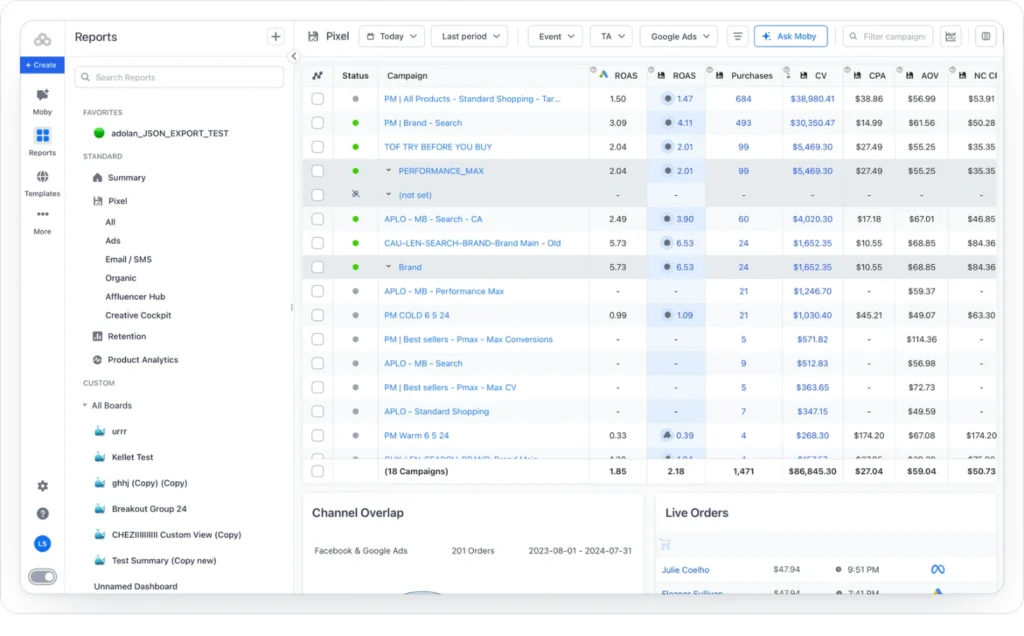
Features:
- Multi-touch attribution
- Behavioral analytics
- Proprietary pixel technology
- Signals
- AI agent
- Custom events
- Audience builder
Best for: E‑commerce brands (direct‑to‑consumer) with multiple ad channels, needing strong behavioural and attribution insights.
Pricing: Free tier available, paid tier starts at $149/month.
7. Hyros
Hyros is a campaign attribution tool offering ad tracking and multi-touch attribution.
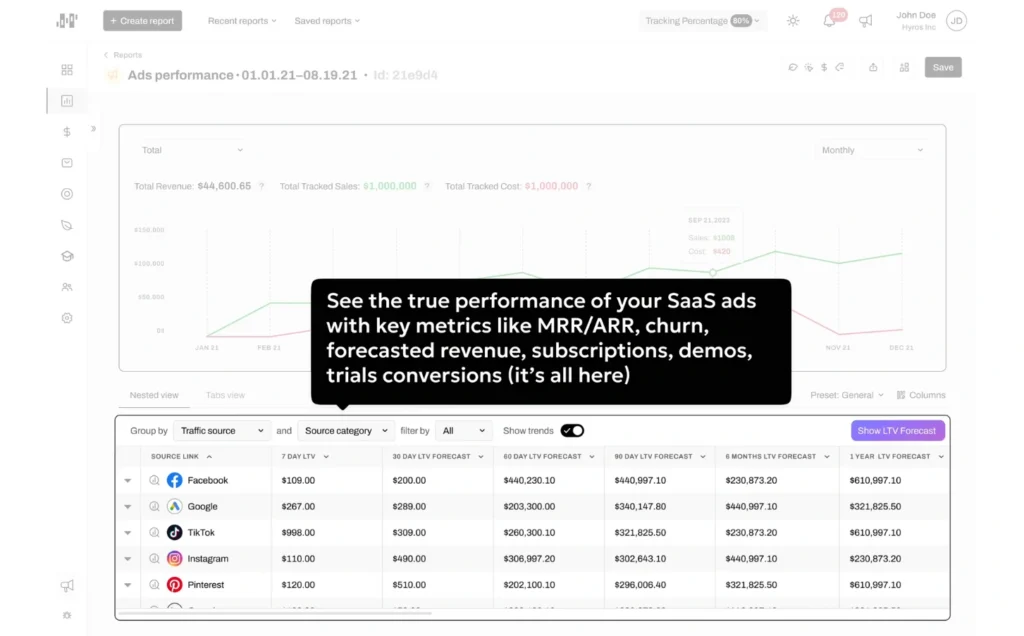
Features:
- Full ad‑platform attribution
- Multi‑touch revenue attribution
- LTV tracking
Best for: Businesses with significant ad spend who need granular tracking of ad ROI and attribution
Pricing: Starting at $230/month (with annual plan)
8. HubSpot Marketing Hub
HubSpot Marketing Hub offers multi‑touch attribution (MTA) as part of its advanced marketing reporting functionality. Available in Marketing Hub Enterprise (or high‑end tier).
Features:
- Single-touch and multi-touch attribution models
- Contact, deal and revenue attribution reporting
Best for: Enterprise organisations that already use HubSpot, and want attribution without buying a specialised tool.
Pricing: $3,600 per month

